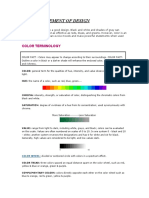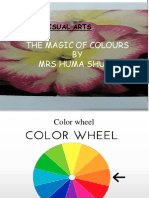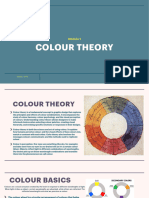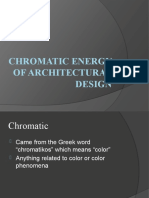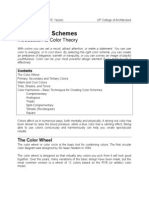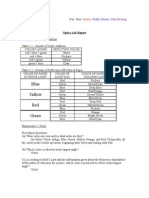100% found this document useful (1 vote)
1K views6 pagesIntroduction To Color Theory
The document introduces color theory and the color wheel. It explains that the color wheel can be used to combine colors harmoniously and create different moods. The primary, secondary, and tertiary colors are defined. Warm and cool colors are also defined and different color harmonies or combinations that are considered pleasing - like monochromatic, complementary, analogous, triadic, split-complementary, rectangle, and square - are described.
Uploaded by
is gueCopyright
© © All Rights Reserved
We take content rights seriously. If you suspect this is your content, claim it here.
Available Formats
Download as PDF, TXT or read online on Scribd
100% found this document useful (1 vote)
1K views6 pagesIntroduction To Color Theory
The document introduces color theory and the color wheel. It explains that the color wheel can be used to combine colors harmoniously and create different moods. The primary, secondary, and tertiary colors are defined. Warm and cool colors are also defined and different color harmonies or combinations that are considered pleasing - like monochromatic, complementary, analogous, triadic, split-complementary, rectangle, and square - are described.
Uploaded by
is gueCopyright
© © All Rights Reserved
We take content rights seriously. If you suspect this is your content, claim it here.
Available Formats
Download as PDF, TXT or read online on Scribd
/ 6
